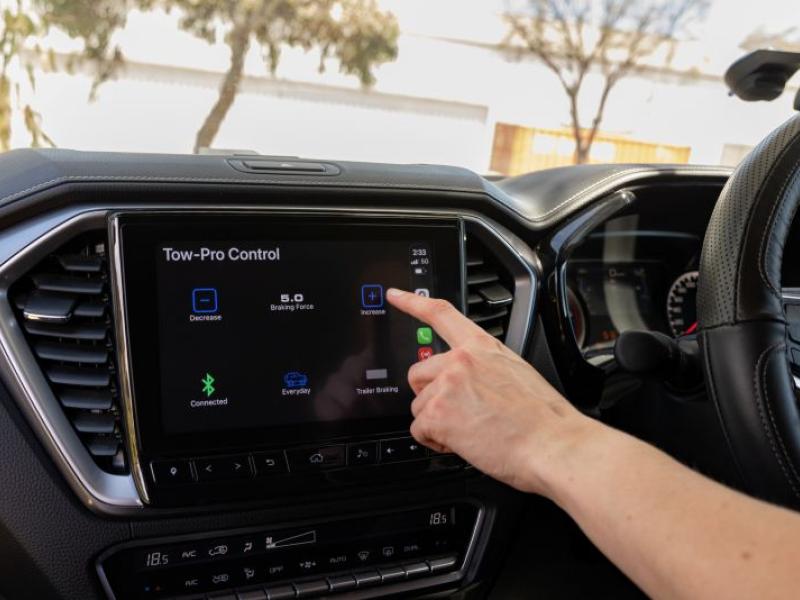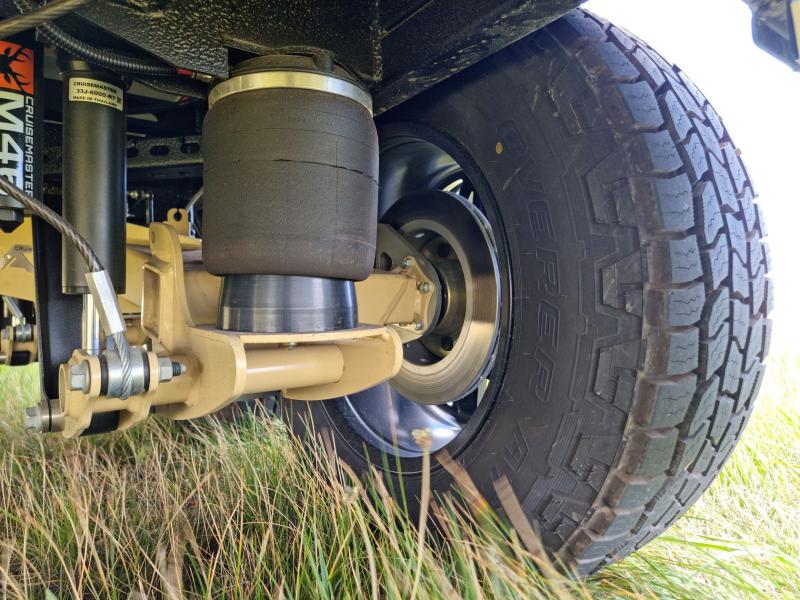You know what you want don’t you? First and foremost you want the ‘look’ and the on and off-road ‘presence’ a suspension lift offers.
Sure you can convince your wife/partner/significant other that the ride/ground clearance/fuel consumption (???) etc etc will be better too. But at the end of the day it’s the ‘look’ you’re spending your hard-earned money on.
Achieving it could hardly be easier as well. Flick through through the pages of any issue of NZ4WD and you will find plenty of ads from reputable companies selling suspension upgrade parts and services.
Once you start looking the choice is vast – from simple replacement of your OEM struts, coils, leafs and dampers with aftermarket equivalents, to extravagant lift kits which will see your humble daily driver or weekend warrior tower over you like a Transformer.
Check through our feature this month and you can read about how much work has to go into developing aftermarket packages which meet all the relevant government standards around the world.
Here, what you can and can’t do is set out by the Land Transport Safety Authority (LTSA) with much of the behind-the-scenes work done on its behalf by the Low Volume Vehicle Technical Association (LVVTA).
Simply put if your 4x4 (or any other road-going vehicle) is factory standard and unmodified all it needs to be used legally on the road is a rego and WoF.
If it is modified in any way, however, it ‘may’ need a low volume vehicle (LVV) certificate to get a WoF.
Your average bar room expert will be able to tell you all about what can and can’t be done below the LVV threshold. But like anything it is better to go to the source (in this case the NZTA website at www.nzta.govt.nz/vehicles/warrants-and-certificates/modifying-your-vehicle/) and find out for yourself.
Before you start plunking down hard-earned beer vouchers it also pays to jump on the web and do some research.
My own research, for instance, has seen me reluctantly shelve plans for a make-over of my long-suffering daily driver (aka The Mighty Terrano) in favour of a yet-to-be-purchased alternative with more, better and hopefully cheaper aftermarket options.
My decision was made after finding a particularly frank story on an Aussie 4x4 site, the fundamentals of which I will pass on here.
Start with the right vehicle
As I found out first-hand, the 4WD you currently have, might not be the best one to modify. For instance, because most of the aftermarket suspension kits are made in Australia, it makes sense to pick a ‘likely candidate’ form a list of models sold there.
Any Toyota Land Cruiser is a good bet, as if any recent turbo-diesel double-cab ute. The main problem with my coil-sprung R50 Terrano (aka Pathfinder) is that it never sold in great numbers across the Tasman therefore only one company makes a lift kit for it and that gives just a 20mm rise.
So do the research if you have a lesser known model.
Dreams vs reality
Your dream – and fair enough too – might well be to spend every summer down south exploring the tracks you read about in NZ4WD. But if your reality is travelling to and from various building sites with a tray full of tools and raw materials for the rest of the year you might be better off leaving your daily unmodified, and building up a cheap weekend play hack from – say – a stolen/recovered Surf or Salvage/Police Auction Suzuki Vitara or Escudo.
Consider the legalities
Here we are lucky that we have any number of reputable distributors/retailers who have made it their business to know the Low Volume Vehicle (LVV) rules backwards. So for heaven’s sake talk to as many as you need to, to make sure what you want to do (particularly around suspension lifts and things like wheel spacers) is within the law.
No use bleating and moaning when you are knocked back for a WoF by something as simple, for instance, as wheels and tyres poking out of the guards for want of some wheel arch extensions or simple strips of rubber.
A weighty matter
Before you kit out your new DC turbo-diesel ‘work ute’ it’s worth considering what the mods you plan are going to do to the Centre of Gravity (CoG) and/or the tare weight.
Adding a heavy steel bull bar (which could weigh up to 90kg) and winch up front can really screw up your fore-at weight distribution. As can adding heavy tool chests directly above and/or behind the rear axle line.
If the same ute is then expected to carry four burly blokes (weighing, with safety gear over 100kgs apiece) you can quite easily use up all your 900+kg tare weight allowance, rendering your ute a handful, not to mention technically illegal to be driven, on the road.
Do it once, do it right.
Finally, in the same vein, make sure you finish speccing up your 4WD the way want it (including the heavy bits like front bar, winch, and rear tray or luggage compartment/drawer system/fridge etc etc BEFORE you upgrade the springs and shocks.
If you don’t the springs that suited the unmodded weight of your truck will be marginal/too soft for the modified, and with it considerably heavier, version.
To read every story in the August 2017 issue of NZ4WD go to Ziniocom (July 21) or purchase your own hard copy at the Adrenalin store.







